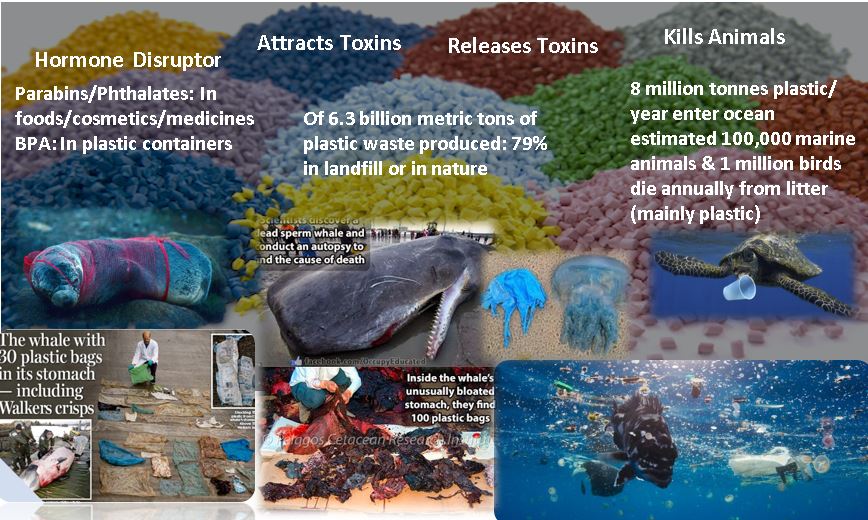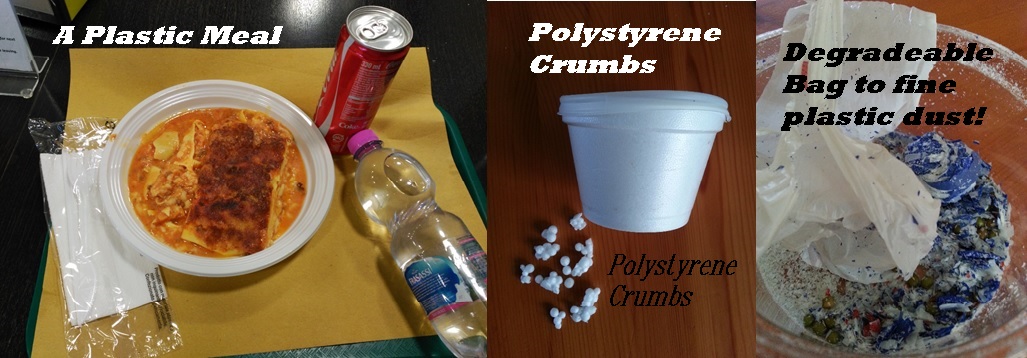
We are addicted to disposable plastic trash. National Geographic reported of 8.3 billion metric tons of all plastic produced, 6.3 billion metric tons is plastic waste. Of that, only 9% has been recycled. 79% is accumulating in landfills or sloughing off in the natural environment as litter: See https://news.nationalgeographic.com/2017/07/plastic-produced-recycling-waste-ocean-trash-debris-environment/
But with a bit of effort we can change this by changing our habits. Here are the challenges. Work your way through each level before going onto the next level.
Level 1: REDUCE by BYOR (bring your own reusable):
Use one of the following instead of a disposable. Once you are comfortable carrying one of them in your bag, try more. It is all about creating habits and reducing the amount of disposables we use.
- BYO Bag – reuse any bags you have (disposable plastic bags can be reused and have a lot from many years ago) and refuse any that might be given to you
- BYO water bottles – and remember they do need cleaning out
- BYO Cup – suggest you purchase one here as disposable cups are pretty flimsy.
- BYO Plate and cutlery to canteens and parties that serve plastic
- BYO Take away containers for restaurants
- BYO Towel – to dry your hands in public bathrooms
See post Plastic Free Milk and BYOR to avoid more plastic
Level 2: ELIMINATE BY REFUSING
Congratulations, you are on level 2 because you have completed level 1. Work your way through this list before going to the next level:
- Refuse to use plastic products that are single-use such as plastic straws, plastic cups, plastic glitter, shavers and many more!
- Refuse products that contain micro-beads. For a list of those products see here: http://www.beatthemicrobead.org/product-lists/
- Refuse to purchase or accept items that will be sold in un-necessary plastic packaging.

- Shop at places that require you to BYO “packaging” to reduce plastic food packaging. Want to “kick the plastic habit”? https://www.zerowasteweek.co.uk/shop-without-excess-packaging/ and there are shops that sell goods in zero packaging. The web is your friend to find these places 🙂
- If you are here, this is a bonus challenge for people with babies – consider elimination communication to ditch the nappies, save money and have a closer relationship with your child 🙂 I have seen this work really well when both couples are involved in making this work.
See post: Plastic Free – Common Items
Level 3: REUSE
Congratulations, you are on Level 3 because you have completed Level 2. Work your way through this list before going to the next level:
- For bin liners consider reusing the empty plastic food bags if you purchase foods with plastic packaging.
- Freecycle (https://www.freecycle.org/search) stuff
- Purchase second hand
- For women only – consider “reusable sanitary ware” such as a menstrual cup and/or cotton cloth pads that can be washed (web searches will tell you what you can get locally)My own personal experience: I would use a menstrual cup over a bleached cotton/rayon tampon; washable breathable sanitary protection over a non-breathable, plastic backed, chemical impregnanted (to reduce odours) pad any day. Personally I have found the technology used for today’s reusable sanitary protection really good and glad I have left the old days of tampons and plastic backed pads.Additionally, there is a liberation over having reusable sanitary protection on expedition trips rather than to have to carry lots of sanitary protection and then having to work out how to dispose of it whilst in the natural world or during a sporting event.Also a view from Tree Hugger: https://www.treehugger.com/health/reasons-why-you-should-switch-to-reusable-menstrual-products.html
Level 4: REPAIR and REPURPOSE
Congratulations, you are on Level 4 because you have completed Level 3. Work your way through this list before going to the next level:
- Repurpose (Upcycle): Search the web for craft / ways to reuse “stuff” you have to throw away. Lots of YouTube videos.
- Refurbish old furniture There are businesses that will help you refurbish furniture such as sofas, dinning room chairs, etc.
- Repair cafes are popping up around the world. The USA and UK have Repair Cafe. Singapore has Repair Kopitiam.
Level 5: REQUEST to Reshape our environment
- Request your company / family & friends get involved in a beach / community clean up (In Singapore the Public Hygiene Council will lend tongs to help pick up). Beach clean ups help to reduce the amount of rubbish in the waters. Community clean ups reduce the amount of run away rubbish that can enter our water ways.
- Request the government installs water dispensers in public places like air ports and train stations so that you can fill up your own bottle
- Request events like marathons to consider encouraging participants to bring their own bottles and provide water dispensers at tables.
- Request shops package goods in environmental packaging / reduce the amount of disposable packaging to replace with reusable packaging
- Request your organisation (schools/offices) give up single-use disposable & develop a culture of BYOR (Bring Your Own Reusable); information is passed around in an e-format.
A final on types of packaging as there is confusion between the terms Degrade-able (and some companies mean this but call their packaging bio-degradeable) vs Biodegrade-able vs Compostable: http://green-plastics.net/posts/85/the-difference-between-degradable-biodegradable-and-compostable/
Thank you if you have gone all the way to level 5. Collectively we can make this a better world.
What happened to Recycle? Plastic is a low priority to many municipals around the world. So get this: glass, metal, cardboard has a recycle rate of about 99%; plastic on average around the world has a recycle rate of 10% – 20%. That means over 90% of the world’s plastic is landfilled / illegally dumped / incinerated & is killing animals in vast quantities. It has not been established how it is affecting us, but we do know this:
- Plastic attracts toxins so becomes a toxic soup in the ocean
- Plastic is a hormone disruptor – disrupts the production of hormones in animals and hence their reproduction.
It is in everyone’s interest to stop this and something we can all do together as long as we all do our part.
Look at what’s in your bin and be responsible for what you throw away. If it cannot be part of the circular economy, refuse to purchase the item.
Below are references to posts for tips to going Plastic Free and was written for Plastic Free July:
Plastic Free Milk and BYOR to avoid more plastic & single-use/disposable in general
Plastic Free Snacks, Balloons, Toothpaste, Balloons
Natural Soaps, Shampoos & Conditioners
Natural Ways to Clean the house
Ideas to help introduce actions in your own organisation / office
